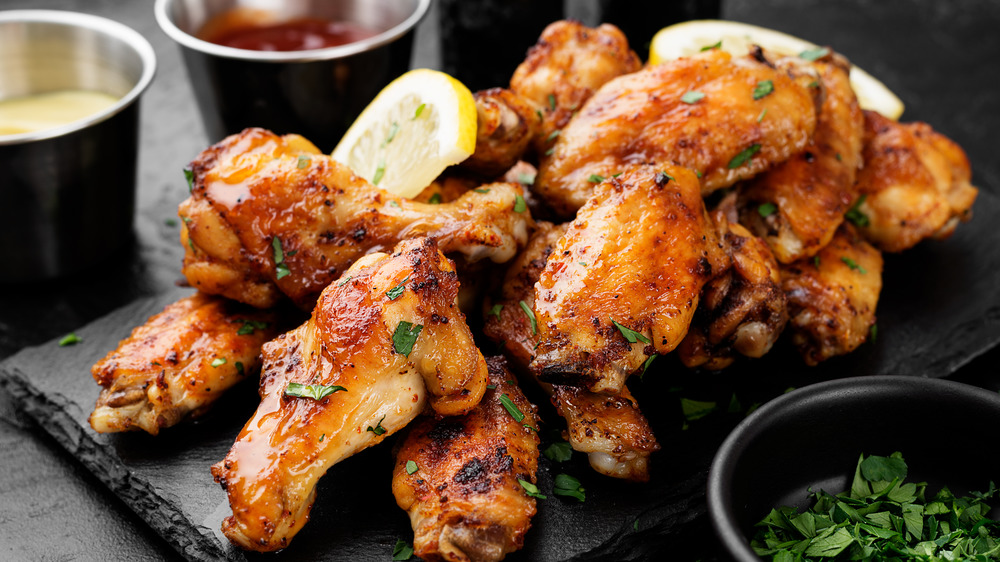The Real Reason Americans Love Chicken Wings So Much
On Jan. 23, the National Chicken Council projected that Americans would eat 1.4 billion chicken wings during this year's Super Bowl, an increase over last year by 27 million, or a two percent increase. This is such an inconceivable number that the report gave six different ways to visualize just how many chicken wings that is, including the fact that if each wing represented one second, 1.4 billion would be about 45 years.
Instinctively, however, such an amount feels right. Meat + Poultry reported on the results of a survey investigating the chicken consumption habits of Americans during the COVID-19 pandemic. In the midst of a general increase in chicken consumption of 19.5 percent, 61 percent responded that they would eat chicken wings for Christmas dinner while 57 percent said they would welcome a wing spread for Thanksgiving.
Such popularity had already caused the wings to become the most expensive part of the chicken in 2013, as Smithsonian Magazine noted. The inconvenient facts of chicken anatomy has, as David Portalatin, NPD's vice president, told Forbes in 2019, put pressure on companies: "When there are two wings on the bird, the demand for wings outstrips the ability of the supply chain to keep up. Restaurants are forced to innovate in a way that is outside of a straight commodity wing." Innovation, they are pursuing, including thighs as a possible addition to wings.
Their ubiquity makes it impossible to not include about them in numerous lists of the most iconic meals of America.
America's love of chicken wings is a fairly new obsession
The country's love and adoption of the chicken wing is a relatively new phenomenon. And, like chicken breasts, society's obsession with chicken wings was born from cheap convenience. For a 2019 Bon Appetit piece, Sophia Hampton wrote how chicken breasts were born from the remains of substandard chicken carcasses in the 1950s. Rather than losing out on a whole chicken, processors cut the chicken into bits to weasel round regulations until we have reached a point where shopping lists "call for two chicken breasts and five chicken thighs, but [don't] remind shoppers their recipe actually requires the use of three whole chickens."
As chicken breasts began to dominate the market, as Vox explained in an examination of America's relationship with chicken wings, the wings which were once attached to the breasts became cheaper. After all, everyone wanted the breast, not the other chicken bits. So it became a cheap meat for bars like the Anchor Bar, the birthplace of Buffalo chicken wings, to sell while its patrons watched sports, hence the connection between wings and sports, especially the Super Bowl. And from those communal bar dippings, a national dish was born.

